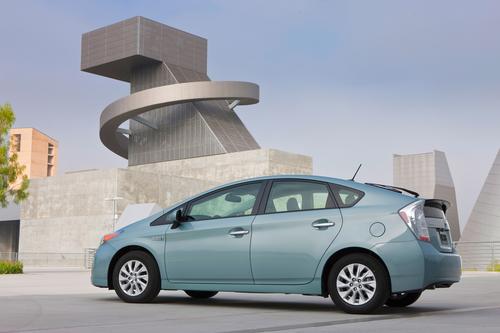When it comes to automotive reliability, it’s no secret that Japanese cars dominate. Still, Consumer Reports' latest reliability ratings may come as a surprise to some.
March 22, 2016
When it comes to automotive reliability, it’s no secret that Japanese cars do well. Still, Consumer Reports’ latest reliability ratings may come as a surprise to some.
During the past eight years of the magazine’s reliability ratings, which can be seen in its April issue, only 15 vehicle models have had "much better than average" used car verdicts in five or more of the years. All were Japanese. Moreover, 10 of those models were built by one company -- Toyota.
Those findings are sure to stir debate. Some in the auto industry are, after all, skeptical of Consumer Reports’ annual used car survey. But it’s hard to argue one point: The ratings have value because they are based, not on the opinions of industry gurus, but on the average problem rates of various components (engines, transmissions, fuel systems, electronics, etc.) in 740,000 vehicles, as described by their owners.
This year’s results again showed a stark difference between automakers. Among the 15 vehicles in our slideshow (all of which had the aforementioned "much better than average" verdict in five of eight years), none are American or European. None were built by Ford, GM, Volkswagen, Chrysler, BMW, or Mercedes-Benz. All came from three manufacturers –- Toyota (including Lexus), Honda (including Acura), and Mazda.
To be sure, many experts understandably argue that today’s vehicles are in general so good that it matters little if a vehicle’s engine or transmission has a problem rate of 1% (much better than average) or 3% (much worse than average). But while that logic may work for some owners, many others don’t want to take their cars in for service three times as often as they might otherwise.
Stay tuned to Design News, as we will soon publish an article based on an interview with Consumer Reports, discussing why some automakers are consistently faring well in the annual reliability survey, while others consistently do poorly. Until then, we encourage you to click through the slideshow to view some of the auto industry’s most reliable vehicles.
Click the image below to begin.

The Toyota Prius is one of two vehicles worldwide that posted a "much better than average" used-car verdict in all the models years from 2008-2015. The Prius’ only hiccup was a below-average rating in the power equipment sub-system area (which consists of such features as cruise control, wiper motors, remote start, and alarm systems) in 2009. Still, its overall verdict was outstanding, even in 2009. Moreover, the 2009 glitch was fixed in the next model year, and Prius’ power equipment sub-systems have had low problems rates ever since.
(Source: Toyota)
READ MORE ABOUT AUTOMOTIVE TECHNOLOGY:
Senior technical editor Chuck Murray has been writing about technology for 32 years. He joined Design News in 1987, and has covered electronics, automation, fluid power, and autos.
About the Author(s)
You May Also Like



